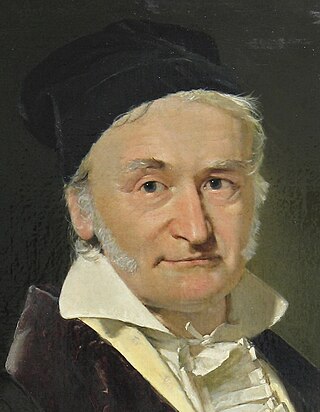Related Research Articles

The ampere (, ; symbol: A), often shortened to amp, is the unit of electric current in the International System of Units (SI). One ampere is equal to 1 coulomb, or 6.241509074×1018 electrons' worth of charge, moving past a point in a second. It is named after French mathematician and physicist André-Marie Ampère (1775–1836), considered the father of electromagnetism along with Danish physicist Hans Christian Ørsted.
The centimetre–gram–second system of units is a variant of the metric system based on the centimetre as the unit of length, the gram as the unit of mass, and the second as the unit of time. All CGS mechanical units are unambiguously derived from these three base units, but there are several different ways in which the CGS system was extended to cover electromagnetism.

In physics, electromagnetism is an interaction that occurs between particles with electric charge via electromagnetic fields. The electromagnetic force is one of the four fundamental forces of nature. It is the dominant force in the interactions of atoms and molecules. Electromagnetism can be thought of as a combination of electrostatics and magnetism, two distinct but closely intertwined phenomena. Electromagnetic forces occur between any two charged particles, causing an attraction between particles with opposite charges and repulsion between particles with the same charge, while magnetism is an interaction that occurs exclusively between charged particles in relative motion. These two effects combine to create electromagnetic fields in the vicinity of charged particles, which can accelerate other charged particles via the Lorentz force. At high energy, the weak force and electromagnetic force are unified as a single electroweak force.
The International System of Units, internationally known by the abbreviation SI, is the modern form of the metric system and the world's most widely used system of measurement. Established and maintained by the General Conference on Weights and Measures (CGPM), it is the only system of measurement with an official status in nearly every country in the world, employed in science, technology, industry, and everyday commerce.

The metric system is a system of measurement that succeeded the decimalised system based on the metre, which had been introduced in France in the 1790s. The historical development of these systems culminated in the definition of the International System of Units (SI) in the mid-20th century, under the oversight of an international standards body. Adopting the metric system is known as metrication.
The franklin (Fr) or statcoulomb (statC) electrostatic unit of charge (esu) is the physical unit for electrical charge used in the centimetre–gram–second electrostatic units variant (CGS-ESU) and Gaussian systems of units. It is a derived unit given by
The statvolt is a unit of voltage and electrical potential used in the CGS-ESU and gaussian systems of units. In terms of its relation to the SI units, one statvolt corresponds to exactly ccgs 10−8 volt, i.e. to 299.792458 volts.
In physics, the weber is the unit of magnetic flux in the International System of Units (SI), whose units are volt-second. A magnetic flux density of one Wb/m2 is one tesla.

Gaussian units constitute a metric system of physical units. This system is the most common of the several electromagnetic unit systems based on cgs (centimetre–gram–second) units. It is also called the Gaussian unit system, Gaussian-cgs units, or often just cgs units. The term "cgs units" is ambiguous and therefore to be avoided if possible: there are several variants of cgs with conflicting definitions of electromagnetic quantities and units.
The abampere (abA), also called the biot (Bi) after Jean-Baptiste Biot, is the derived electromagnetic unit of electric current in the emu-cgs system of units. One abampere corresponds to ten amperes in the SI system of units. An abampere of current in a circular path of one centimeter radius produces a magnetic field of 2π oersteds at the center of the circle.
Vacuum permittivity, commonly denoted ε0, is the value of the absolute dielectric permittivity of classical vacuum. It may also be referred to as the permittivity of free space, the electric constant, or the distributed capacitance of the vacuum. It is an ideal (baseline) physical constant. Its CODATA value is:
Heaviside–Lorentz units constitute a system of units and quantities that extends the CGS with a particular set of equations that defines electromagnetic quantities, named for Oliver Heaviside and Hendrik Antoon Lorentz. They share with the CGS-Gaussian system that the electric constant ε0 and magnetic constant µ0 do not appear in the defining equations for electromagnetism, having been incorporated implicitly into the electromagnetic quantities. Heaviside–Lorentz units may be thought of as normalizing ε0 = 1 and µ0 = 1, while at the same time revising Maxwell's equations to use the speed of light c instead.

An ampere-hour or amp-hour is a unit of electric charge, having dimensions of electric current multiplied by time, equal to the charge transferred by a steady current of one ampere flowing for one hour, or 3,600 coulombs.
The vacuum magnetic permeability, also known as the magnetic constant, is the magnetic permeability in a classical vacuum. It is a physical constant, conventionally written as μ0. Its purpose is to quantify the strength of the magnetic field emitted by an electric current. Expressed in terms of SI base units, it has the unit kg⋅m⋅s−2·A−2.
The abohm is the derived unit of electrical resistance in the emu-cgs (centimeter-gram-second) system of units. One abohm corresponds to 10−9 ohms in the SI system of units, which is a nanoohm.
Abmho or absiemens is a unit of electrical conductance in the centimetre gram second (CGS-EMU) system of units. It corresponds to one gigasiemens.
The abvolt (abV) is the unit of potential difference in the CGS-EMU system of units. It corresponds to 10−8 volt in the SI system and 1/ccgs statvolt ≈ 3.3356×10−11 statvolt in the CGS-ESU system.
The International System of Electrical and Magnetic Units is an obsolete system of units used for measuring electrical and magnetic quantities. It was proposed as a system of practical international units by unanimous recommendation at the International Electrical Congress, discussed at other Congresses, and finally adopted at the International Conference on Electric Units and Standards in London in 1908. It was rendered obsolete by the inclusion of electromagnetic units in the International System of Units (SI) at the 9th General Conference on Weights and Measures in 1948.
The statampere (statA) is the derived electromagnetic unit of electric current in the CGS-ESU and Gaussian systems of units.:278 One statampere corresponds to 10/ccgs ampere ≈ 3.33564×10−10 ampere in the SI system of units.
References
- ↑ A.E. Kennelly (1903) "Magnetic units and other subjects that might occupy attention at the next international electrical congress" 20th Annual Convention of the American Institute of Electrical Engineers, 1903 accessed 10 December 2020